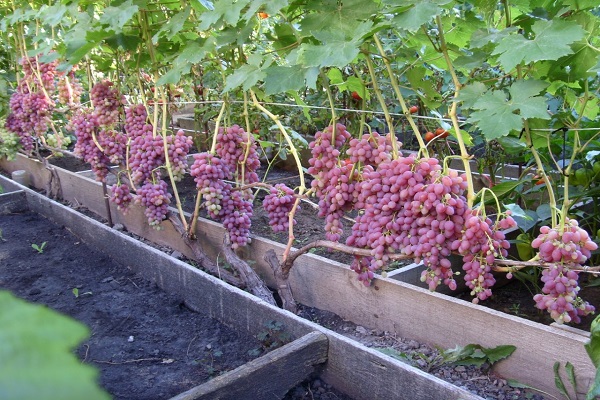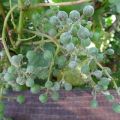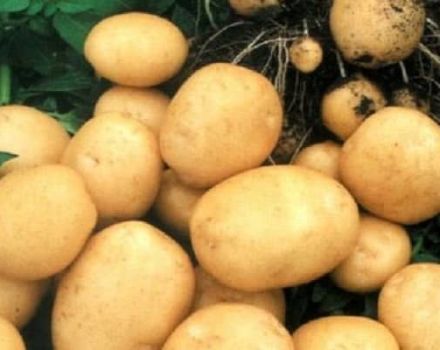How to deal with diseases and pests of grapes, what to do and what to spray
Grapes are considered an unpretentious crop that is fairly easy to grow in the garden. However, despite this, gardeners are often faced with various diseases of the grape, which can harm the plant and negatively affect the level of yield. It is recommended that you familiarize yourself with the main grape diseases and methods of their elimination in advance.
The most common grape diseases
There are several main diseases that most often appear when growing grapes.
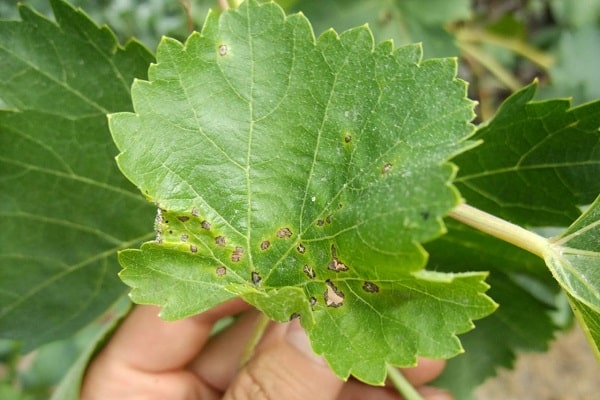
Leaf rubella
Such a pathology appears in the first half of summer or in May, when there is no rain and the weather is dry. With the development of the disease, only grape leaves are affected. It is easy to identify leaf rubella in a timely manner. To do this, it is enough to familiarize yourself with its main features, which include:
- the appearance on the leaves of an orange bloom, which outwardly looks like rust;
- falling leaves before the start of fruit formation;
- the appearance of red spots on the leaf plate.
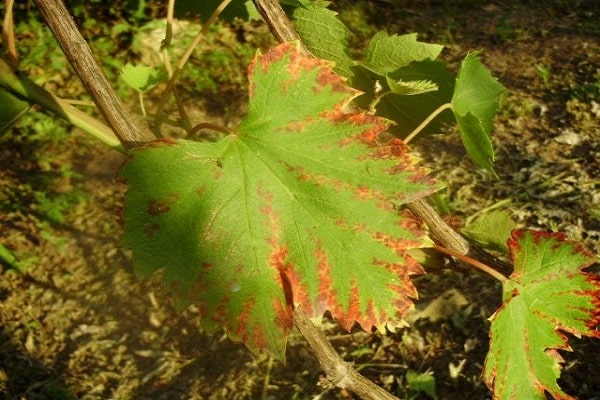
Septoriasis
Another common pathology that affects grape bushes is septoria. Most often, the disease affects the muscat varieties of the grape crop. With the development of septoria, the leaves are covered with brown spots, and mold forms on their lower part.
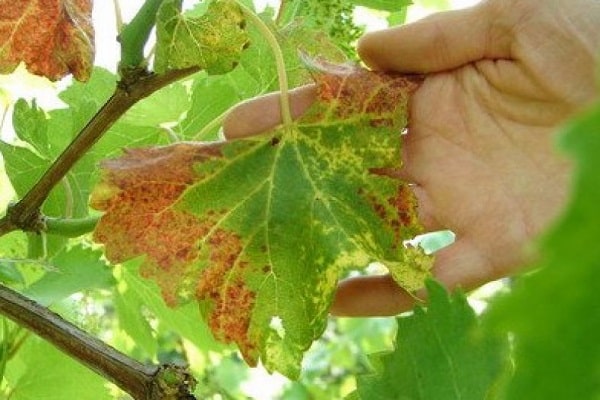
Escorioz
Such a disease is considered dangerous, since it affects all parts of the plant. Due to pathology, shoots and leaves are completely covered with dark spot. Escoriosis develops in high humidity conditions in mid-spring. If you do not start treatment in time, the grape seedlings will die.
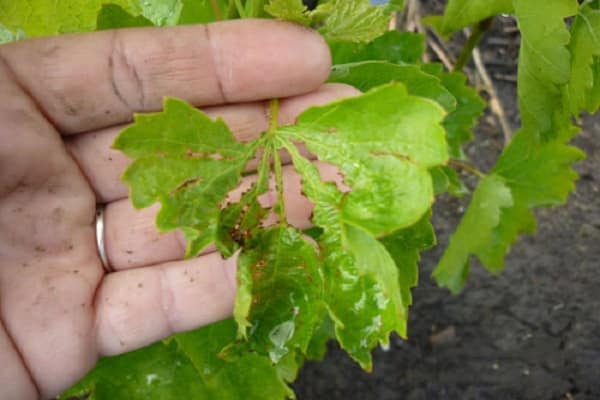
Oidium
This fungal pathology is encountered by many gardeners who grow grapes. At first, the disease spreads only to the leaves, but then the signs of oidium appear on the inflorescences, stems and fruits. The development of the disease is facilitated by the high air temperature, the values of which exceed 20 degrees. Therefore, most often the signs of powdery mildew appear in spring or summer.
A white bloom appears on the infected bushes, which gradually darkens. Also, signs of the disease include twisted leaves, darkening and rotting of shoots.
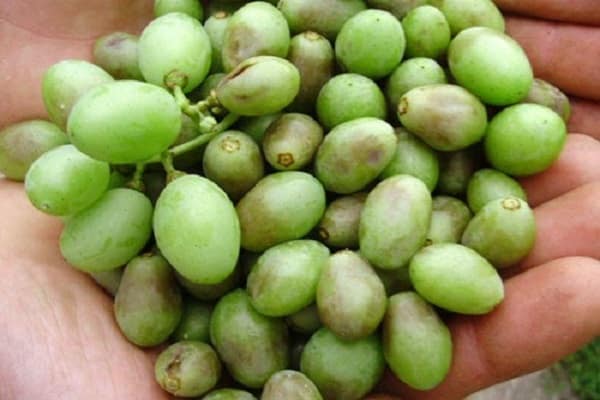
Varieties of diseases
There are different varieties of grape diseases that are best known in advance.
Viral
Viral pathologies are very dangerous and therefore it is recommended to treat them immediately after they appear.Pathologies of this type are transmitted by ticks, nematodes and other sucking pests. Also, pathogens can be transmitted through infected seedlings or garden tools for soil treatment.
Plants infected with viral pathologies grow slowly and bear poor fruit. Their leaves are covered with yellow spots and gradually curl.
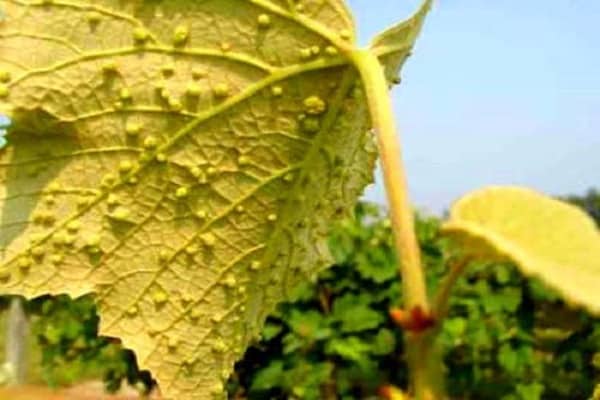
Fungal lesions
The causative agent of fungal diseases is activated in summer, at high temperatures. The most common fungal grape disease is escu, in which the surface of the leaves turns brown. However, such pathologies affect not only leaves, but also fruits. Infected berries turn brown and shrivel. If the plant is not cured in time, it will die.
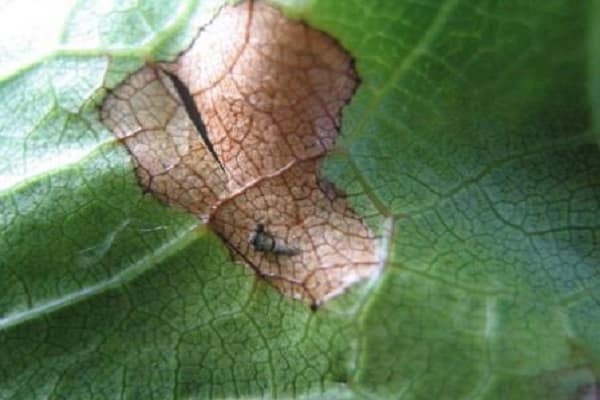
Non-communicable diseases
Diseases that do not appear due to bacterial, viral or fungal pathogens are non-infectious. Their development is facilitated by unfavorable weather conditions, poor-quality or infertile soil and improper care.
Common signs of non-infectious pathologies include the appearance of pimples on the leaves. Also, small white spots may appear on their surface, which will gradually darken.
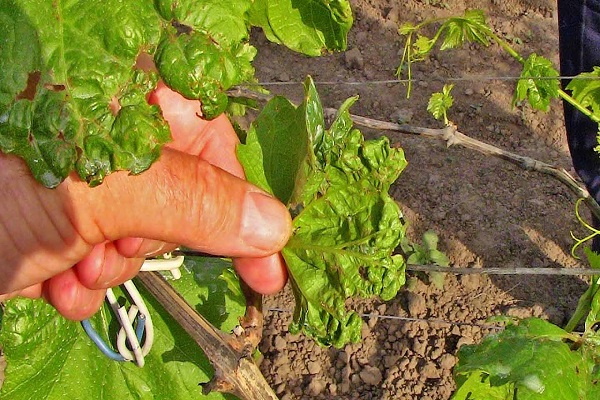
Bacterial
Plants become infected with bacterial diseases through infected garden tools, soil or infected shrubs that grow nearby. Common pathologies from this group include bacterial cancer, in which yellowish growths form on the leaves.
It is impossible to cure grape seedlings, and therefore you will have to dig up all infected bushes and immediately burn them.

Pests
Pests of grapes are as dangerous as their main diseases. Among the common grape pests, leaf and root phylloxera are distinguished. The insect infects the leaves and sucks out the juice from them, which leads to the depletion and death of seedlings.
Another dangerous pest that affects grape seedlings is itch. Such an insect is practically invisible, since its length is only 0.1 mm. It affects the lower part of the leaves, which is why it becomes covered with cobwebs. First, the itch affects the leaves located at the bottom of the grapes, and then goes to the top.

How to treat diseases in grapes?
After signs of pests or pathologies have been identified on the berries, you need to familiarize yourself with how to treat them. It is impossible to delay with the treatment of vines, as they may die. Therefore, immediately after the detection of diseases, the fight against them begins.
When treating bushes, it is recommended to use effective fungicidal preparations:
- Stroby. The product is produced in the form of granules, which are dissolved in a liquid before use. The solution for spraying is done 1-2 hours before the procedure. To do this, one granule is dissolved in a ten-liter container with water. It is necessary to spray the leaves with a solution from "Strobi" twice a week.
- "Polykhom". This fungicide is considered effective because it has a complex effect. There are various ways of using "Polychoma", but most often it is used to create a solution. By treating grapes with this preparation, it is possible to get rid of rust, powdery mildew and late blight.
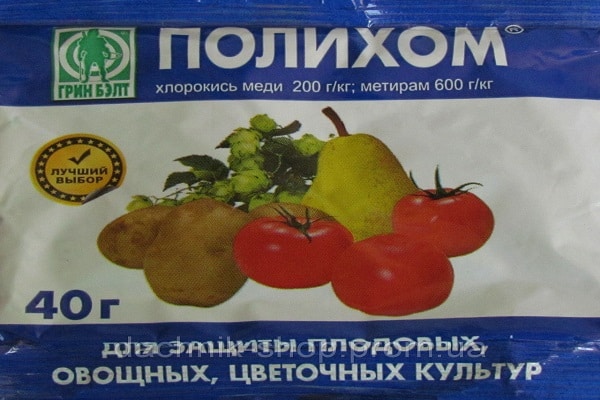
Effective folk remedies
Winegrowers with experience often use folk remedies to treat planted grape bushes. Common folk remedies for plant treatment include the following:
- An infusion made from cow dung. Regular spraying of seedlings with such a liquid will eliminate any pests on the leaves.To prepare the solution, two liters of manure are added to a bucket of water. Then overripe straw is added to the container with liquid. The prepared mixture sprayed grapes every 8-9 days.
- Garlic infusion. A remedy made from garlic can get rid of many viral and fungal pathologies. To create a tincture, two heads of garlic are crushed and mixed with 5 liters of water and 40 grams of soap.
- Milk solution. When creating such a milk product, you will have to mix 20 drops of iodine with a liter of milk and 8 liters of water. Then the liquid is infused for an hour and a half and used for spraying.
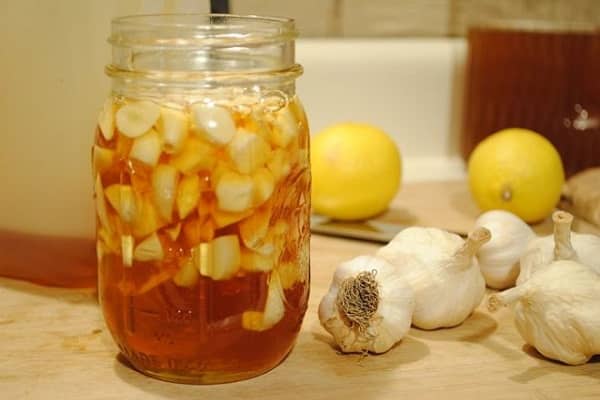
The most resistant varieties
In order not to deal with the treatment of grapes, varieties resistant to pests and diseases are chosen for planting. These include:
- Rice. A tall plant that can grow up to 2-3 meters in height. The variety is distinguished by small berries with a diameter of about 20 mm and a weight of 5-6 grams. The advantages of Rhysus include resistance to common insects and pathologies.
- Laura. The variety is popular with gardeners who grow table grapes on their own. The characteristic features of Laura include the safety of the harvested crop, which does not deteriorate for about 2-3 weeks. Also among the advantages should be highlighted resistance to frost and late blight.
- Danko. This variety of grapes is distinguished by vigorous bushes and large berries, collected in cylindrical bunches. Danko is suitable for growing in the middle lane, as it copes well with frost.
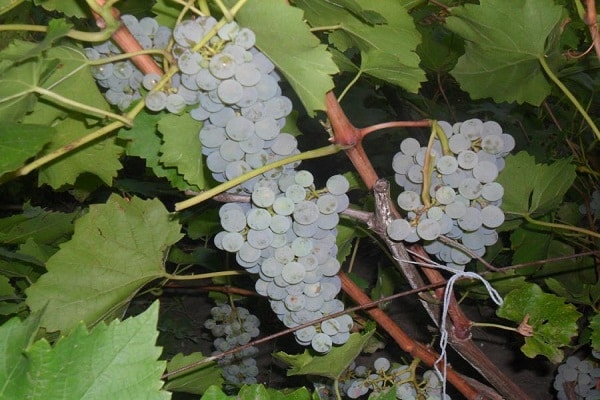
Preventive measures
Disease prevention is very important as it reduces the chances of grape infestation. Therefore, when growing grape bushes, you should engage in preventive procedures.
To protect the seedlings from pests and pathogens, you will have to regularly dig up the area and clean it of weeds with dry leaves. All dry foliage with grass should be burned in the fall or taken out of the site.
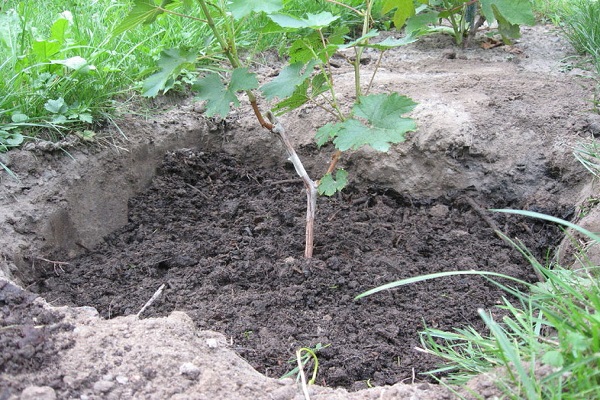
Also, to improve the protective properties of the grapes, you will have to periodically feed it with fertilizers. In the summer season, the bushes are fed 2-3 times with mineral fertilizers and organic matter. In addition, the bushes can be treated with a special agent "Topaz", which prevents the development of viral and bacterial diseases.
Conclusion
Growing grapes, many are faced with dangerous diseases and pests that impair yields. To protect grape seedlings, you will have to familiarize yourself with the main diseases and pests in advance, as well as the most effective ways to eliminate them.
